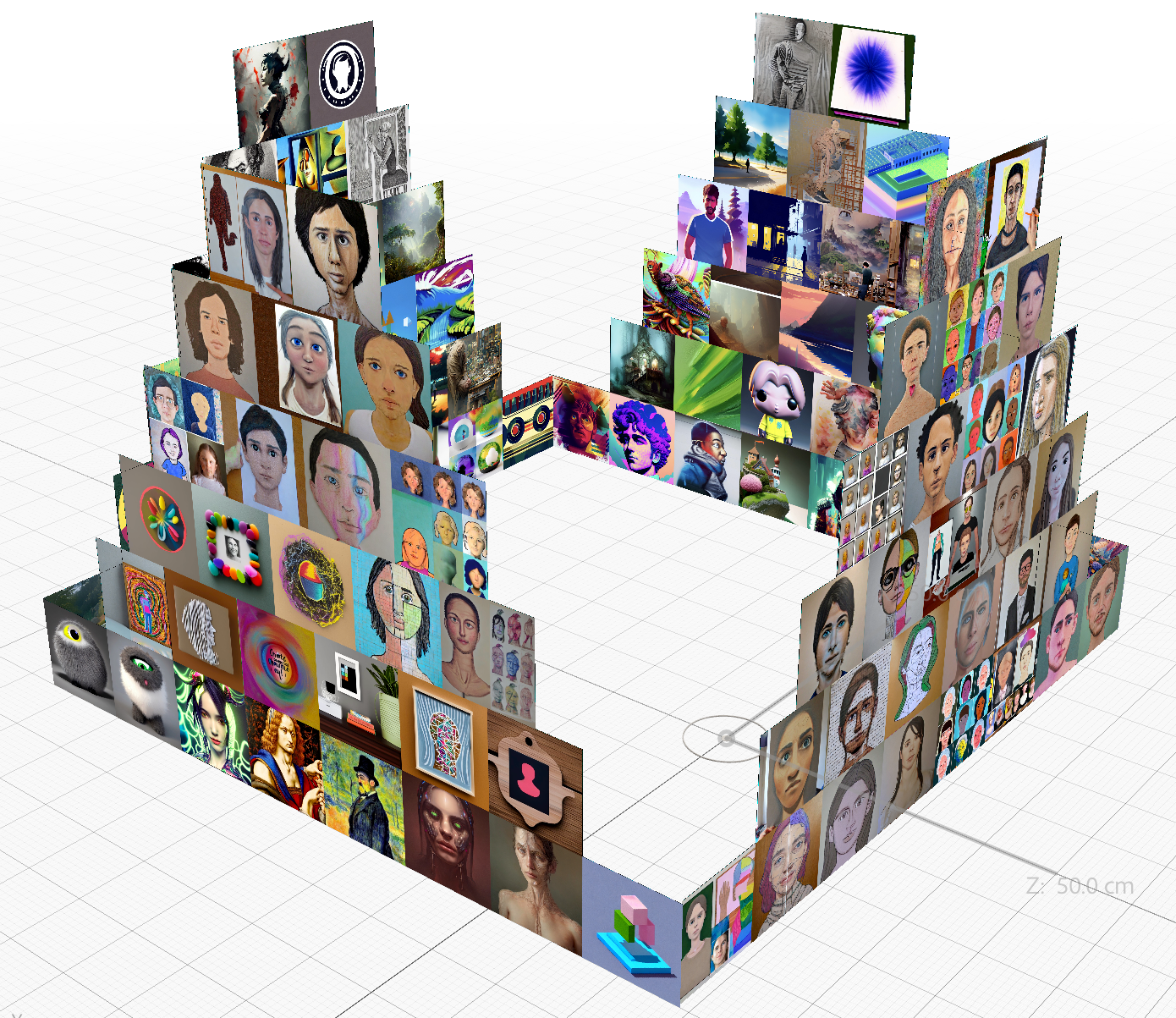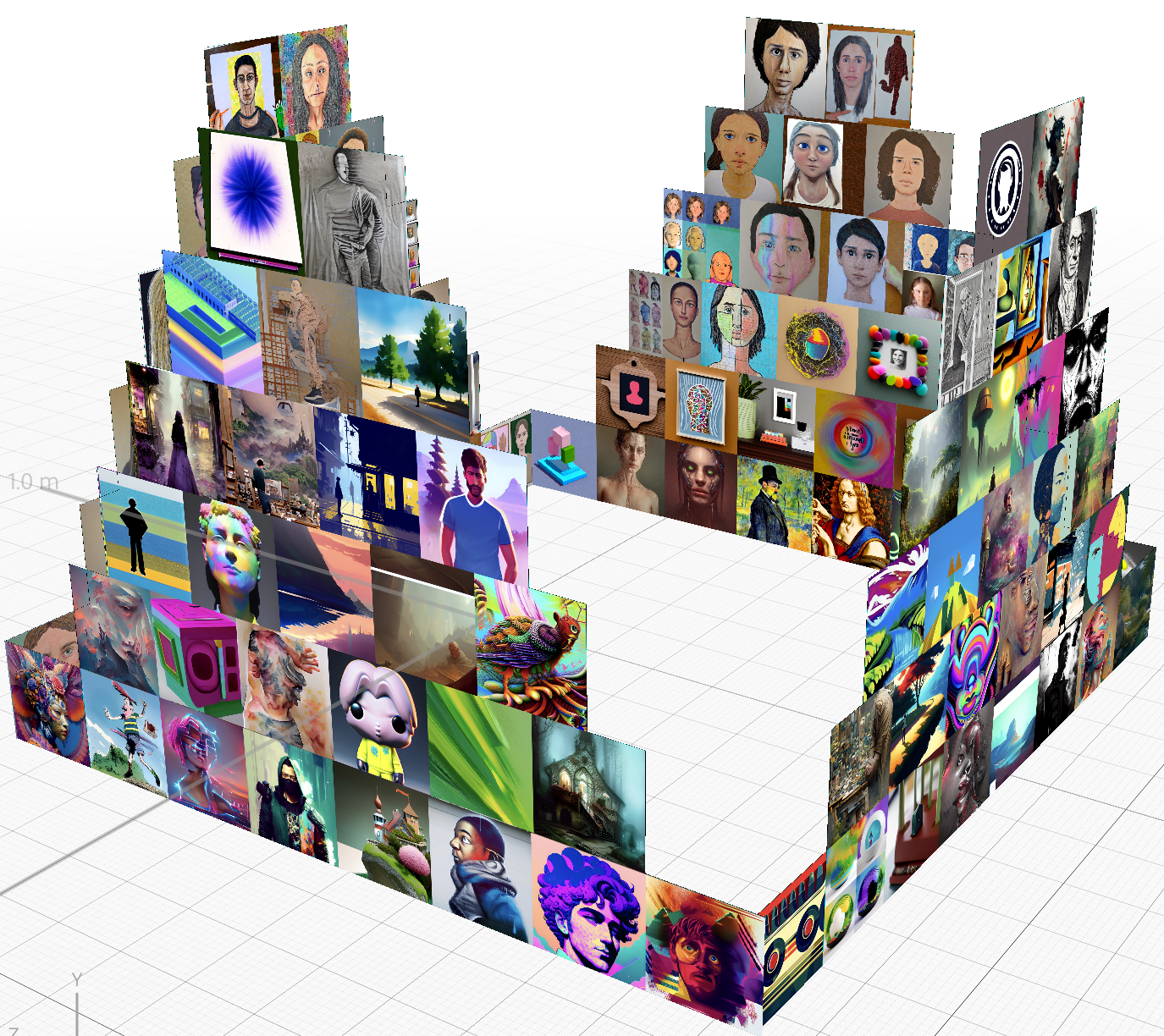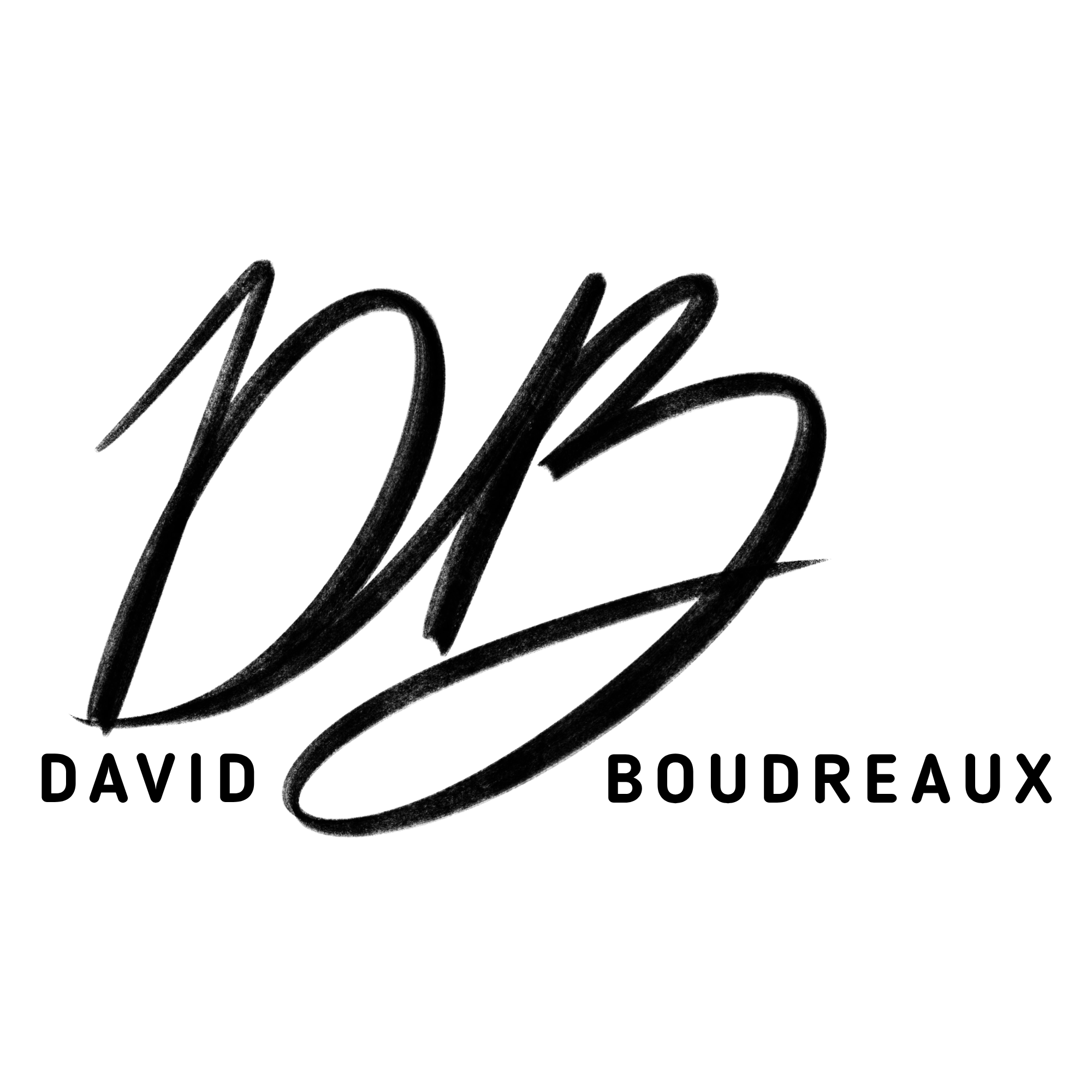

Artificial intelligence has been growing in popularity over the past year, pushed by the idea that AI can create images, text, and more similar to a human. However, AI is programmed by humans, introducing biases based on how the programmers intended the AI to act and what information they have access to. As an artist, I became interested in how AI art is viewed, where most people might view it as revolutionary. I felt that it was possibly dangerous as it discounts the work of artists by creating something that would take an individual a significant amount of time.
AI is simply computer programming, but in some ways, it contains the personality of the people who programmed it. I was interested in asking AI how it might view itself, if it were to create a physical representation of itself. I began this project by asking ChatGPT to create a physical representation of itself, however, due to its restrictions, it could only provide an ASCII image of itself. The image it created was of a triangular shape, I would eventually use this in order to create the collage of images.
I asked four separate image AI the same exact prompt: “Create a physical representation of yourself,” and the images varied based on the AI and style influence. Some of the AI were biased based on the images and data they use to train the AI, this is seen through the amount of human faces that are present in the collage. Even with the same prompt, each of the AI’s interpreted it differently, based on the bias they have. Personally, I found it interesting to think about how much human influence each of the AI had, as all four had instances where it would generate an image of a person. Being able to provide an image representation of what AI thinks it might look like creates a new relationship between the audience viewing the images and our connection to AI itself.










